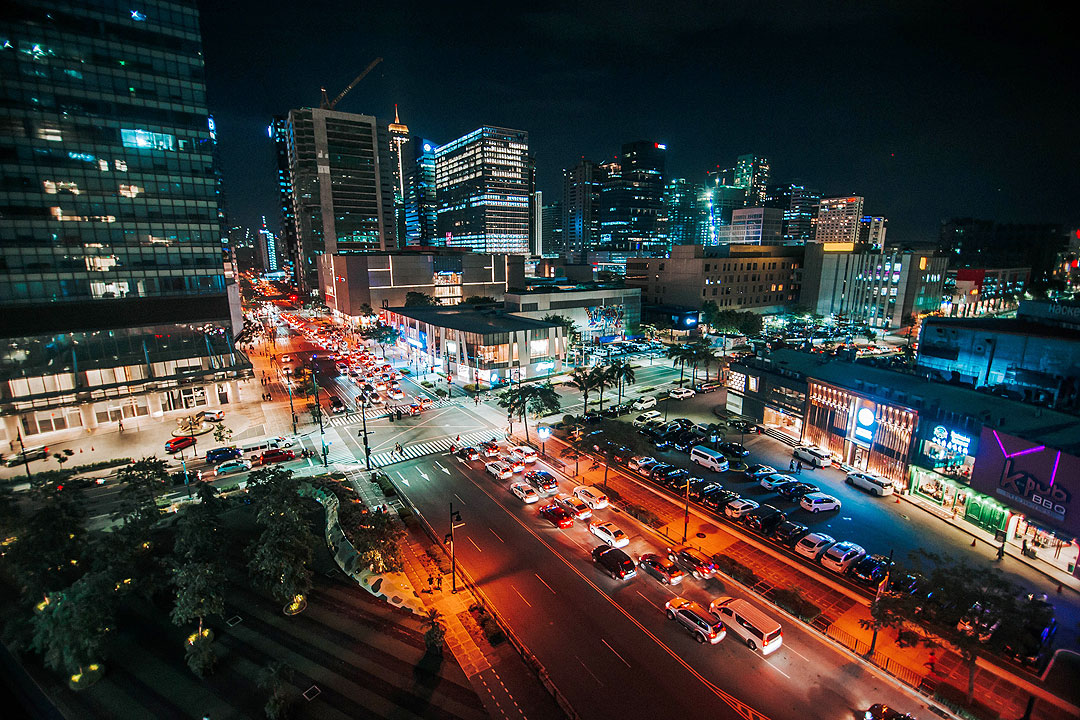
Human Side Of Economics
By Bernardo M. Villegas

(Part 3)
Even before the pandemic, there were already clear signs that highly congested urban areas like the National Capital Region (NCR) and Metro Cebu were growing slower than emerging regions like Calabarzon*, Central Luzon, and Davao. The recent report by the Philippine Statistical Authority (PSA) on regional growth trends in 2021, the year that recovery from the pandemic was evident, confirmed these regional dispersal trends. The growth rate of the NCR at 4.4% was below the national average of 5.6% and way below growth rates of Calabarzon, Central Luzon, and other “urban” regions. The question now arises about what the LGU officials and the private business sector in Metro Manila and Metro Cebu should do to retain the attractiveness of their cities to investors and individual families or households so that they could limit the hallowing of their municipalities. The answers to this question may also serve as a guide to the emerging new metropolises like Iloilo, Batangas, and Pampanga so that they can avoid the disadvantages of congestion.
We can find some of the answers to this question in a highly enlightening article by Dr. Roberto de Vera, Senior Economist of the School of Economics of the University of Asia and the Pacific and specialist in urban planning, that appeared in the Urban Markets Adviser regularly published by his School of Economics. The article, entitled “Finding Opportunities in Post-Pandemic City Trends,” cites world-famous architect Norman Foster (who has an ongoing project in Makati) forecasting future trends in the way people will live during the post-pandemic era. Foster makes a case that these trends will be expressions in a smaller scale of the dictum that “the city is a powerful social and economic magnet” — a place that gives opportunities for people to meet and create wealth. He points out that these so-called post-pandemic trends were actually already discernible even before COVID-19 hit the world. These trends in how people work, shop, and chill out have just been intensified and are not really completely new in many urban areas all over the world.
Before the pandemic, there were already a good number of us in traffic-infested Metro Manila who brought work after office hours on weekdays and on weekends. Work From Home (WFH) was not a product of the pandemic. It just became more widespread and common because of the lockdowns. Even with the opening up of the economy, people continue to work from home to minimize the risk of being infected. WFH became the norm for most workers in schools, banks, fintech and other service industries where work could be done online.
A study on the future of work in the Philippines conducted by Sprout Solutions suggests that the majority of employees and human resource professionals prefer WFH to be part of the work arrangement even after the pandemic has been put under control. This preference has been especially expressed in the BPO-IT (business process outsourcing-information technology) sector which employs some 1.4 million people. The study finds that 80% of 485 professionals and 91% of 8,194 employees surveyed preferred either a remote work set-up (WFH on all workdays) or a hybrid set-up (WFH on some workdays). To cater to these preferences of workers, companies in Metro Manila and other congested cities may try renting coworking spaces located in neighborhoods close to their workers’ homes. If these rented spaces are in a residential zone, rental fees would most probably be lower than in central districts like Makati or Fort Bonifacio. The alternative could be to reimburse the employees for rents paid to use accredited co-working spaces.
Even as people would want to work from home or places closer to home, Foster observes that, like the city in a smaller scale (e.g. Lipa, Iloilo, Dumaguete, Puerto Princesa), people would want workplaces that will be “much more social” and “much more about the creative sense of community.” He sees a growing demand for “taller spaces, spaces which are healthier, naturally ventilated, fresher,” a demand that seems to have emerged when a bunch of Silicon Valley became early adopters of social, creative spaces. People may still be convinced to stay in megacities if they can work in safe and attractive workplaces. To achieve such desirable physical environments, businesses would need to retrofit their rooms so that stale air can be replaced by fresh air at a frequency supported by peer-reviewed studies. Even more important would be the scheduling of longer breaks between meetings so that workers can eat, stretch, make small talk, and check their Instagram accounts.
Another trend that was accelerated by leaps and bounce is shopping online. Because of sheer need during the pandemic, people ordered food and medicines and paid bills online during the lockdowns. Many businesses reaped and will continue to reap the windfall from this trend: mobile payments, home delivery, online retail platforms, packaging, and take-out food. Foster opines that as pandemic restrictions are lifted, we could see a “shift perhaps from the global economy to a more balanced one between what global can offer and what local can offer.” We saw this play out during the pandemic when residential subdivisions would set up a Viber group where food vendors could sell items such as bangus (milkfish), papaya, sugar, and adobo (a stew). When malls had to close during the lockdowns, sari-sari stores and neighborhood markets flourished. LGUs and private groups could work together to organize neighborhood markets similar to those that have been traditionally held in the weekends at Salcedo and Legaspi Villages in Makati.
Another trend that was highlighted during the pandemic is the urban design of compact cities. One can observe that real estate developers moving to the periphery such as Calabarzon and the Pampanga Triangle are increasingly building what are known as “mixed-use developments.” Because of their experiences during the lockdowns, people got used to what Foster calls the “neighborhood.” Another term for it is “the 15-minute city where within a comfortable 15-minute walk you can find a place of work, shopping and have the ability to dine, to learn, to enjoy leisure and to absorb culture.” We may have to reconfigure some old districts of Metro Manila so they can approximate the conveniences of the mixed-use communities. As Dr. De Vera comments on the phrase “mixed-use,” “I recall the two-story buildings in Binondo wherein the first floor would be a store, and whose owner’s home would be on the second floor. A family living in Binondo during those days could be within a 15-minute walk away from the market, a church, a restaurant.” In the Metro Manila area, a pioneer of mixed use development was Eastwood City put up by Megaworld in the 1980s and now followed by Bonifacio Global City and Nuvali.
In my own field of higher education, Dr. De Vera cites the University of Asia and the Pacific (UA&P) as a virtual participant in the mixed-use development model. He explains: “Amid the rise of cheaper, accessible internet service and user-friendly video conferencing apps, universities have the opportunity of being part of these mixed-use developments even if they are more than a 15-minute walk away from their students. For example, the UA&P School of Economics’ graduate courses taught via Zoom are being attended by professionals based in Taguig, San Juan, Makati, and other places in Metro Manila. Universities have the opportunity of expanding the yet untapped market of millennials and more mature professionals seeking to retool themselves after several years or decades of work. The pandemic jumpstarted the ability of universities ‘to flip the classroom,’ a phrase coined by Salman Khan, founder of Khan Academy, and to offer customized, self-paced learning programs to local and international students.”
Older cities such as those which are in Metro Manila and Metro Cebu could undergo an urban renewal under the strong and enlightened leadership of their respective LGU heads so that some of their areas could still be transformed into mixed use developments to retain their existing population or attract new residents.
Dr. De Vera envisions a possible reversal of the Balik Probinsiya (return to the province) movement. These mixed-use developments in the older cities of the National Capital Region could offer discounted lease rates to craft workers to open up their stores that, for example, sell pottery and offer pottery workshops similar to those conducted at Ugu Bigyan Potter (Tiaong, Quezon), Cornerstore Pottery Farm (Silang, Cavite), City Avenue (San Narciso, Zambales), and Crescent Moon Café and Studio Pottery (Brgy. Dalig, Antipolo City). This would be a way of repopulating the old cities with micro and small and medium enterprises. This type of workshop and similar ones in other industries would be a welcome respite for urban workers suffering from social media overload and Zoom fatigue.
Those who are interested in subscribing to the regular issues of Urban Markets, Industry Monitor and other economic publications of the School of Economics of UA&P may contact bec.sec@uap.asia
*A portmanteau of the names of the Southern Luzon provinces of Cavite, Laguna, Batangas, Rizal, and Quezon.
Bernardo M. Villegas has a Ph.D. in Economics from Harvard, is professor emeritus at the University of Asia and the Pacific, and a visiting professor at the IESE Business School in Barcelona, Spain. He was a member of the 1986 Constitutional Commission.